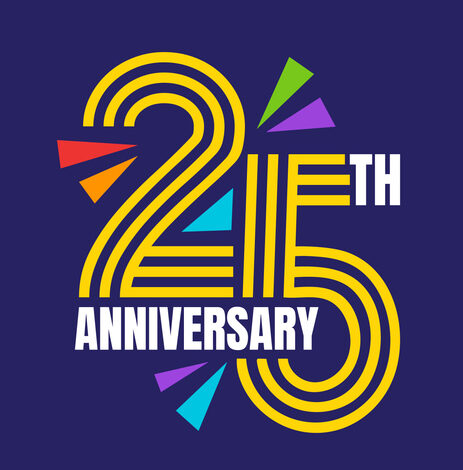In well-run organizations, applications can accumulate more quickly than anticipated. Software stacks often expand in the background due to departmental needs, vendor influence, or short-term solutions. As complexity increases, so do costs. Many organizations face challenges such as unused licenses, overlapping tools, and fragmented workflows. The outcome is an expensive and difficult-to-manage IT ecosystem. To effectively control IT costs through smart app portfolio insights, companies must move beyond superficial audits. Effective cost control starts with gaining visibility and then transforming that insight into action.
Uncovering the True Cost of Applications
Direct costs like subscription fees and licenses are just the beginning. Hidden costs are often buried in areas such as:
-
IT support for multiple platforms
-
Employee training and ramp-up time
-
Compliance and security oversight
-
Data silos and inefficiencies between departments
For example, using multiple project management tools—such as Asana, Trello, and Jira—can lead to confusion in the workflow. Even if the licensing costs are manageable, the time wasted on coordination and the expense of training staff to use different platforms can accumulate quickly.
Additionally, when new tools are adopted without centralized oversight, organizations risk entering a situation known as “Shadow IT.” This occurs when departments acquire software without the knowledge of the IT department. A report by Cisco indicates that Shadow IT can account for 5 to 10 times more cloud usage than officially recognized applications. This unchecked growth poses significant cost and security risks.
Visibility as the Foundation of Control
Before any rationalization can begin, organizations need a clear view of what exists. A complete application inventory serves as the foundation for strategic decisions.
A comprehensive app portfolio includes:
-
All licensed and freemium tools across departments
-
Actual user activity and engagement metrics
-
Details on contract terms, renewal dates, and pricing
-
Departmental ownership and primary use cases
Organizations leveraging tools such as Flexera or ServiceNow often find hidden redundancy. These platforms pull data from cloud platforms and internal systems to reveal the real usage picture. For example, a company may discover that only 10% of licensed users are active on a premium analytics platform. This type of insight enables more strategic decisions at renewal time.
Moving from Data to Rationalization
Once visibility is established, the next step is rationalization. But effective rationalization doesn’t mean slashing tools indiscriminately. It’s about evaluating whether each application serves a clear, valuable purpose.
Smart rationalization strategies include:
-
Redundancy removal: If multiple tools serve the same purpose, identify which one is best aligned with current business processes and consolidate accordingly.
-
Lifecycle evaluation: Older, under-maintained apps often introduce more risk than value. Identifying these early helps reduce future technical debt.
-
Consolidated purchasing: Different departments may be paying for the same tool at different rates. Consolidating these purchases not only saves money but also strengthens negotiating power with vendors.
A good example is when an enterprise consolidates separate CRM tools used by sales, marketing, and customer service into a single platform like Salesforce. While the transition takes planning, the long-term benefits include improved integration, better reporting, and significant cost reduction.
Aligning Tools with Business Goals
Every application should map to a clear business objective. CIOs should ask: Is this tool supporting growth, improving efficiency, or managing risk?
Applications misaligned with core business needs are likely to become shelfware—licensed but unused tools. According to Gartner, shelfware can account for 30% of software spend in large enterprises.
To avoid this, businesses should map applications to three categories:
-
Mission-critical: Tools required to operate core business processes
-
Strategic enablers: Apps that support innovation or competitive advantage
-
Commodity: Tools that provide basic utility and can be replaced easily
This classification guides prioritization and investment. It also supports productive conversations between IT, finance, and business units when reviewing the portfolio.
Governance as a Long-Term Discipline
Application portfolio optimization isn’t a one-time project. Without governance, new tools creep back in and old habits resurface. Building a lightweight but consistent governance model ensures ongoing value.
Essential elements include:
-
A defined intake process for evaluating new software requests
-
Renewal checkpoints that require business justification before continuation
-
Quarterly or biannual reviews of application usage, cost, and relevance
-
Clear ownership of each application, with accountability for usage and ROI
For midsize businesses, a dedicated app portfolio manager may not be feasible. Instead, assigning responsibility to department leads or IT business partners can maintain accountability without adding overhead.
Opportunities for Modernization
While cost control is a major benefit, app portfolio insights also unlock modernization opportunities. Identifying underused or outdated tools often surfaces the need for better solutions, not just cheaper ones.
Some organizations use rationalization to:
-
Migrate from legacy desktop software to cloud-based SaaS platforms
-
Standardize tools across teams to improve collaboration
-
Identify where training or better onboarding can increase adoption
For example, rather than maintaining five isolated content tools, a company might consolidate content creation, asset management, and publishing into a unified platform like Adobe Experience Manager. This streamlines workflows and enables better customer experiences.
Insight Without Action Is Just Noise
Raw data doesn’t drive change. Insights need to be analyzed, contextualized, and connected to action.
To ensure insights translate into outcomes:
-
Set clear KPIs for cost savings, user engagement, and tool utilization
-
Involve stakeholders from IT, finance, and business units early
-
Present insights with a focus on outcomes, not just metrics
When teams see how smarter portfolio management benefits their work—fewer logins, more reliable tools, better integrations—they become advocates for change rather than obstacles.
Building a Sustainable, Efficient Stack
Managing IT costs through insights into the application portfolio is not just about reducing expenses; it’s about regaining control. When software decisions are informed by clear data and aligned with strategic goals, the outcome is not only lower spending but also increased agility and operational clarity.
As software expenditure continues to grow across various industries, adopting this insight-driven approach becomes not just advantageous but essential.





